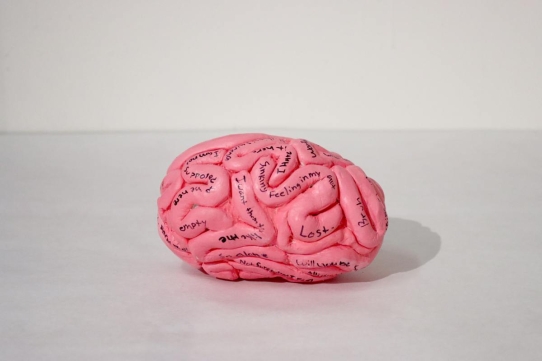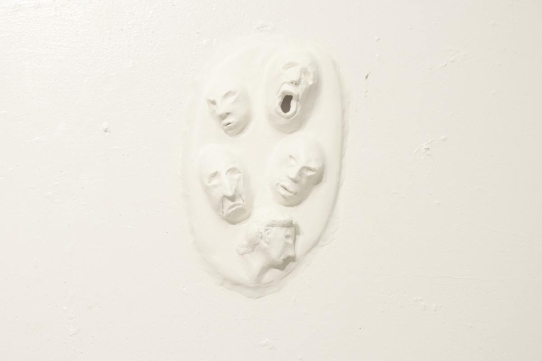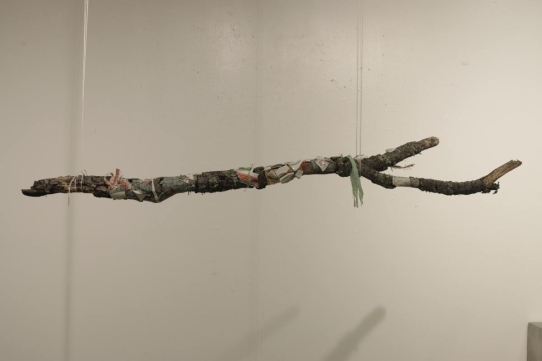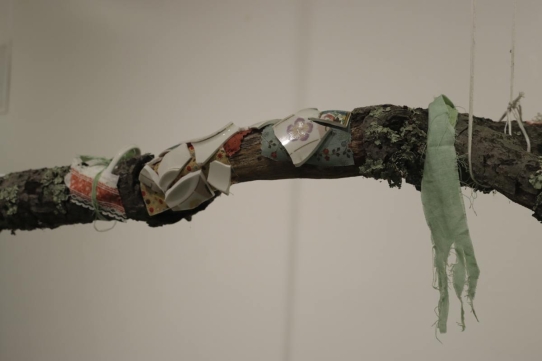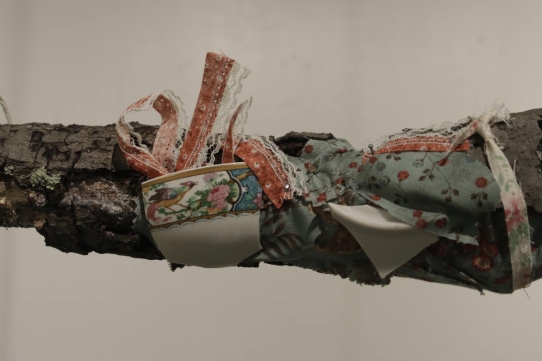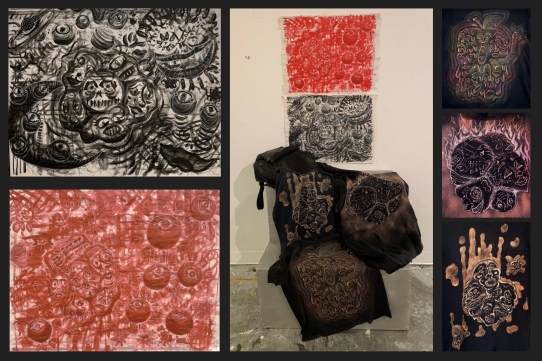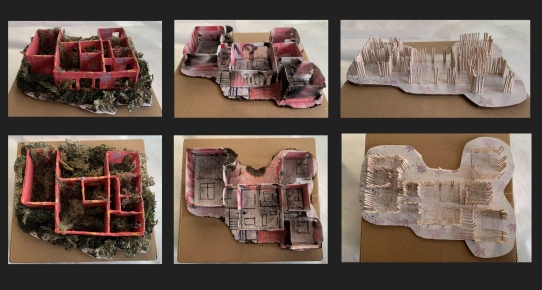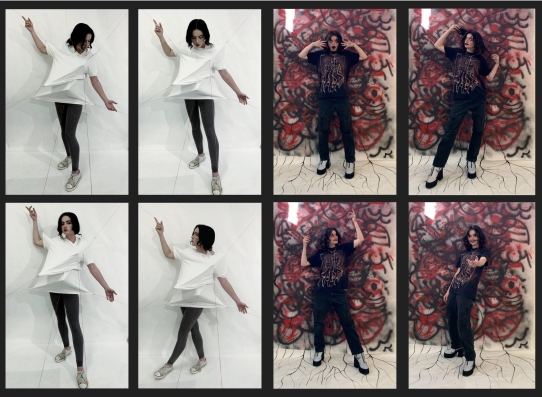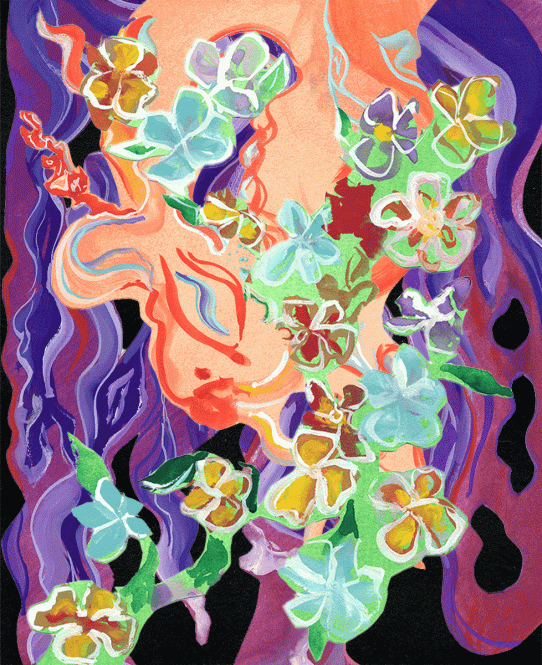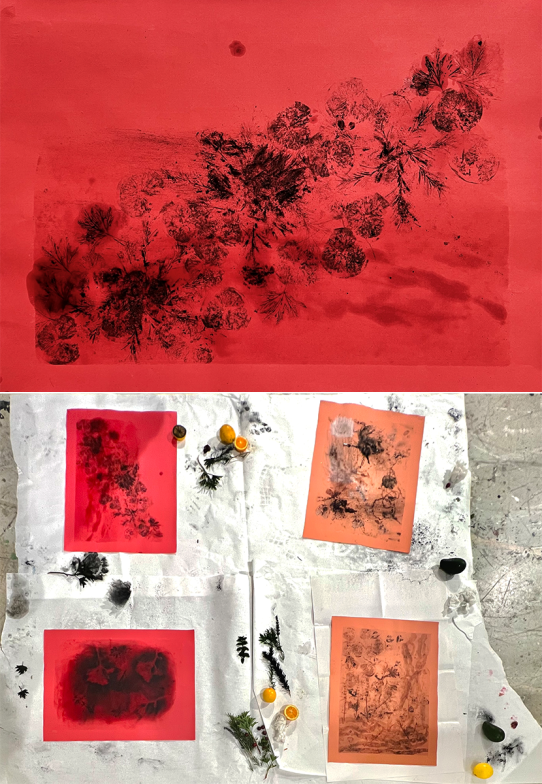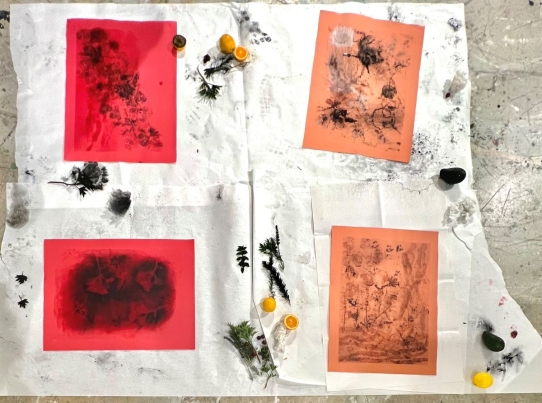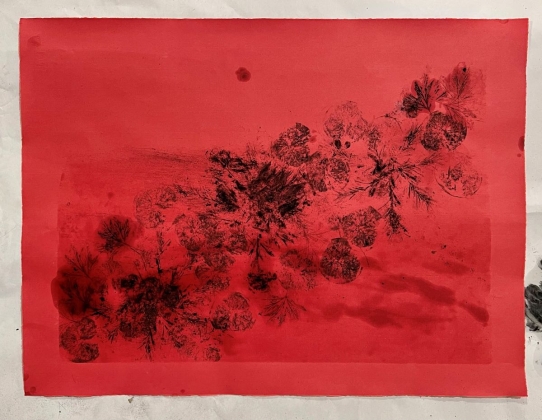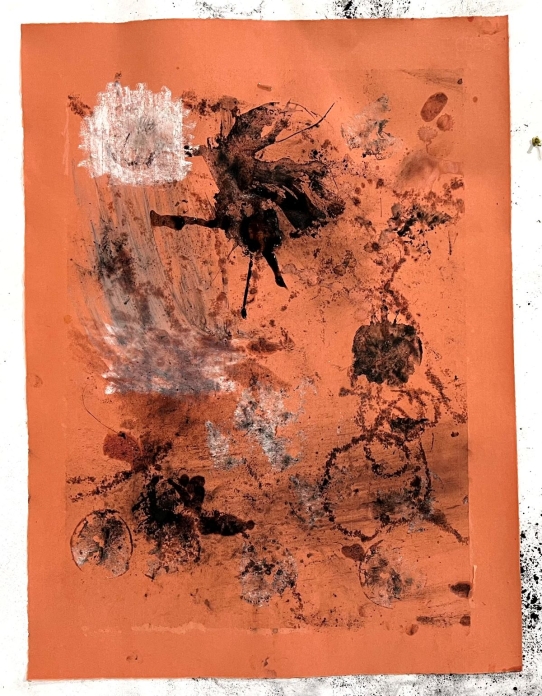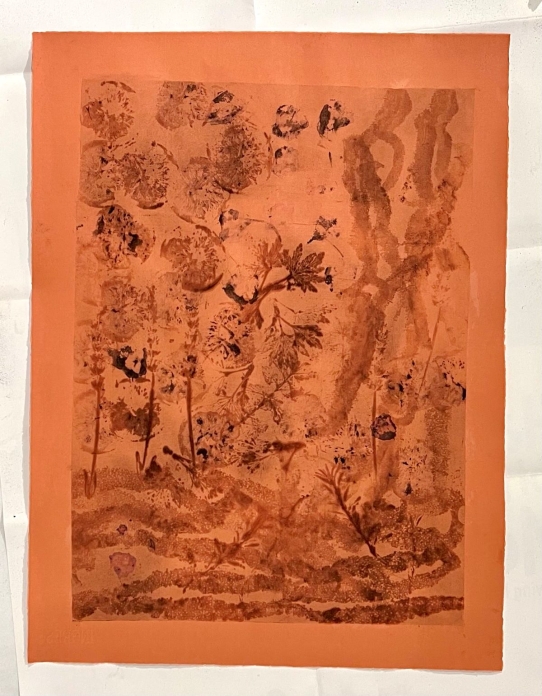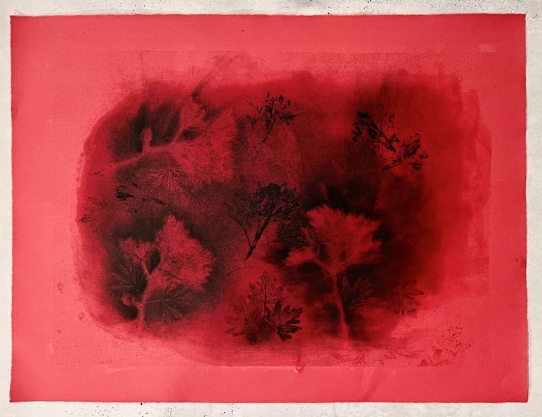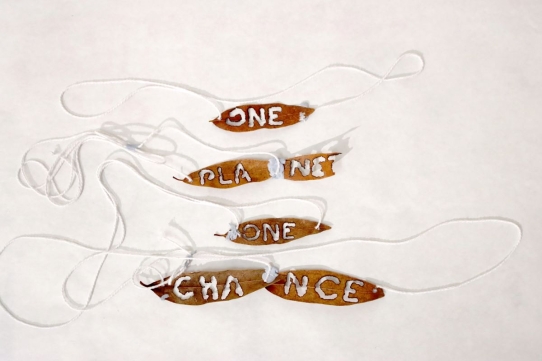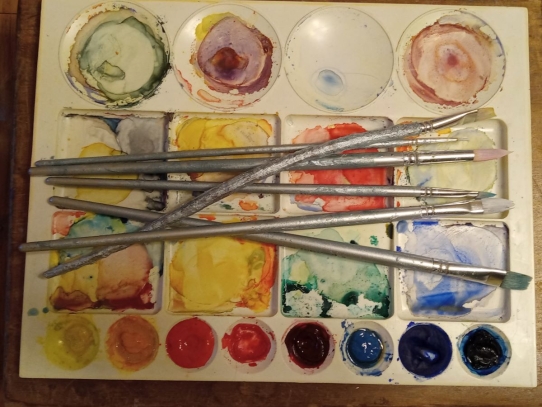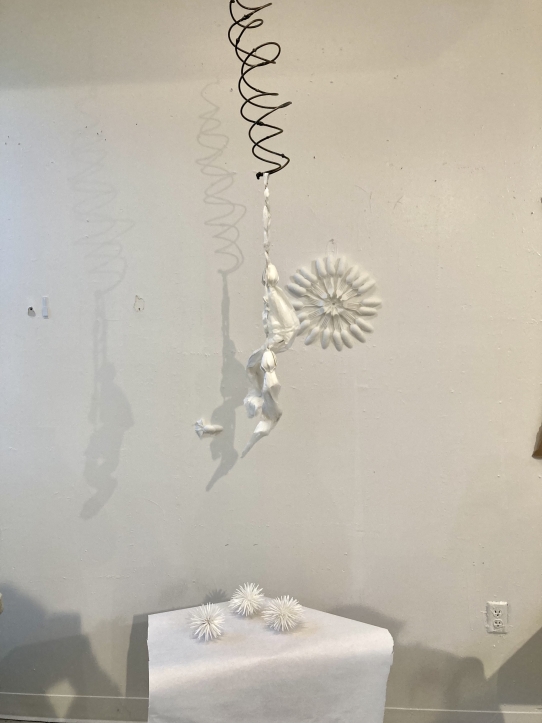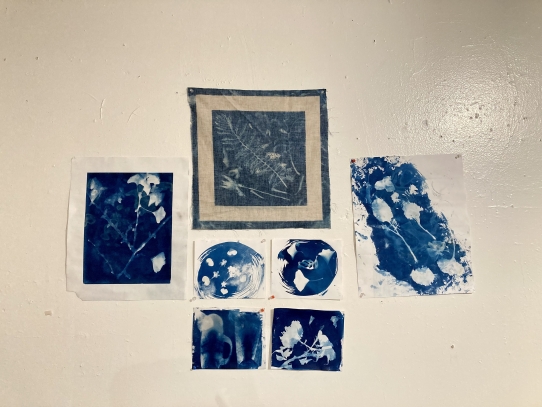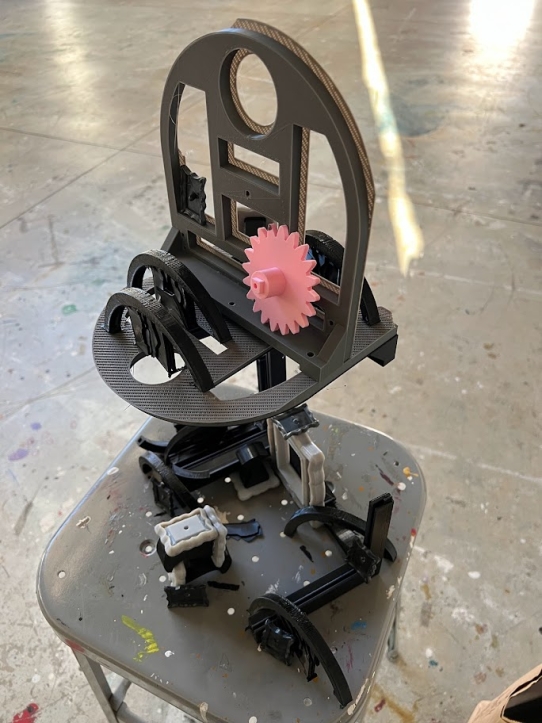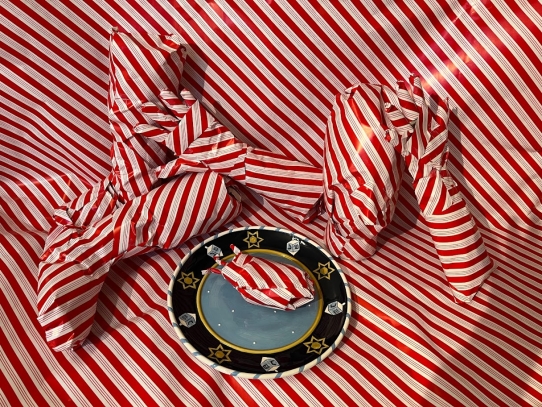Virtual Open Studios Fall 2022 - ART 194 Forms and Ideas
Instructor - Cláudio Bueno
Alexis Santos
“Pick my Brain”
Modeling clay painted with Acrylic, written on with a sharpie
Represents the daily thoughts going on inside
“Pick my Brain”
Modeling clay painted with Acrylic, written on with a sharpie
Represents the daily thoughts going on inside
“To the Surface”
Acrylic on Ceramic
The emotions that are within are now trying to break through the surface
Alina Troncoso
“New Growth”
Found tree branch, scrap fabric nailed onto wood, broken pieces of ceramic dishware glued on to branch
For this piece I wanted to artistically represent “new growth”, as if the piece fell on the forest floor and began to grow foreign objects on it. By using scrap fabric material and broken fragments of ceramic dishware I hoped to repurpose this fallen branch and make it something new.
Cameron Smith
“Untitled”
Coffee bean bags, book binding thread, pins
“Untitled”
Coffee bean bags, book binding thread, pins
“Untitled”
Digital
art194_cameron_smith_4.mp4 from Cameron Smith on Vimeo.
“Untitled”
This assignment required that we “map” an important place.
Carolee Hagey
“Overflow”
Acrylic on Paper & Bleach on Fabric
“Homesick”
Paint on Cardboard, Plastic and Toothpicks
With this piece, I went a bit personal. The models show the effect losing my mother had on the overall structure of my family. Each model has the same basic structure with slight changes, mostly in proportion to symbolize where my family and I spent most of our time during these events. The most important sections are the middle section of the home indicates the kitchen, living room, and dining room, the heart of the house, and the outer three rooms represent the different bedrooms within the home. The first model is intended to show my life's beginning and my family's start. I used bright colors and lots of moss and lichen from the forests around campus. Consider the proportion used in this model as a baseline to compare the other two. The second model shows the home falling apart, symbolized by the melting plastic. The middle section of the home is smaller than in model one. The bedrooms are also larger, especially my parents' room on the left. On the left wall of this room, the word 'OWE' takes up the entire wall, this symbolizes the feelings of inadequacy that I felt during this time. It should also be noted that the bedrooms are being pulled apart from the home of the house, showing the growing space between my family members. The third model shows the attempts at rebuilding the family structure. The overall model has minimal color aside from some purple flowers, as seen in model one. The structure is sloppy and unlikely to be built into something substantial. The home's center is smaller than the other models, and the bedrooms are now entirely separate from the center. However, looking at this model from left to right, the viewer can see the dissipation of ash, showing progress toward a brighter future after a challenging past.
“Social Camouflage”
Photography
Hannah Hodor
“A Dynamic of Memory”
Spraypaint on chipboard
This mobile portrays the complexity of a conscious mind through personal depictions of navigating trauma and memory. There are three abrasive pieces tangled together, each representing a family member and mimicking the construction of reinforced neural pathways caused by significant life experiences. I intended to create an illustration of the explosive, chaotic dynamic of shock and grief while expressing the situational impact on relationships.
“Redlining in Los Angeles”
Digital collage
Strip mall signs are a core part of Los Angeles’s visual landscape, revealing the city’s history and the coexistence of thriving immigrant communities. Moreover, they are landmarks of redlining, exhibit competition between small businesses and national chains, and suggest the inevitable domination of corporate drab. I assembled a collection of photographed strip mall signs to address a diverse story of Los Angeles’s commercial, financial, and cultural influences.
“No Simple Happiness”
Gouache on paper
Inspired by Ursula Le Guin’s “The Ones Who Walk Away From Omelas”, I created a piece that reflects the ethics of human duty and our habit of clouding moral judgment to prioritize happiness and pleasure. Le Guin challenges us to examine a world in which our happiness is dependent on the misery of others, but this is already practiced in Western society; we are aware of and dependent on unfair labor conditions for supplies of luxury. My project centers on the rampant neglect of moral responsibility with layered gouache paper cutouts to represent worldly pleasures as a distraction from a guilting reality.
Hannah Hodor, Jasper Lusebrink, Jorge Garcia, and Maya Anderson
“Untitled”
Fruit and charcoal on paper
A collaborated piece of printed fruits and herbs, serving as a sign for the available produce on campus while calling attention to the topic of food insecurity. We aimed to spark discussion on how the value of food universally varies across social classes and communities. Our project’s statement encourages viewers to discover accessible and affordable food resources they may be unaware of while demonstrating the privilege of disposing of perfectly edible produce.
HJJM Group Project
Maya Anderson, Jorge Garcia, Hannah Hodor, Jasper Lusebrink
“Untitled”
Fruit, Plants, Charcoal, and Oil on Paper
Few students in the class knew that students are welcome to collect ingredients from the farm on campus and this collection of four pieces puts the food on display with their purpose becoming twisted.
Hannah Hodor
“Untitled”
Fruit, Plants, Charcoal, and Oil on Paper
Jasper Lusebrink
“Untitled”
Fruit, Plants, Conté, Charcoal, and Oil on Paper
Jorge Garcia
“Untitled”
Fruit, Plants, Charcoal, and Oil on Paper
Maya Anderson
“Untitled”
Fruit, Plants, Charcoal, and Oil on Paper
Jasper Lusebrink
“Gobi Desert Heat”
Sand and Noodles in Glass Jar
Leaving this piece under a heat lamp brings the desert to the audience through multiple senses and showcases the dinosaur fossils waiting beneath the desert sand.
“One Chance”
Leaves and Twine
This collection of leaves with a message burned through them with a magnifying glass is meant to bring attention to the fragility of our planet’s ecosystem and our role in preventing its collapse.
“Red Herring”
Acrylic on Watercolor Paper
While not officially part of this class's assignments, it was created to distract from the true project and comment on the audience’s preconceptions about what art is or should be: in this case a painting with my face on it.
“The True Project”
Carrot and Food Coloring
While the audience discusses what they presume to be my project on camouflage, I take a bite out of one of my paint brushes that had been sitting in plain view, revealing that my art was not on the subject of camouflaged, but rather was camouflaged by the painting with my face drawing their attention.
Karina Neeley
“Travel Sack”
Linen and Cardboard
Represents moving away from home to a new home, holding a dream within.
“Kelp and Sea Urchins”
Biodegradable forks, spoons and steel rod
“Gifts of Love”
Cyanotypes
May Anderson
“Soul for a Sole”
Monochromatic Photograph
This photo is one of two in a collection of items addressing consumerism. This photograph confronts the use of leather products in shoes, and fashion's impact on the environment.
“Pots and Pans”
Monochromatic Photograph
This photo is two of two in a collection of items addressing consumerism. This photograph confronts capitalistic obsession with hoarding items, specifically those that are impossible to use all at once.
Milo Halperin
Map of the mind
Digital art
Represents the compartmentalization of the ideas and emotions.
Tower to success
Failed 3d Prints
Represents the process of trial and error as it builds you up to success.
Tower to success
Failed 3d Prints
Represents the process of trial and error as it builds you up to success.
How to Hide a Body
Gift wrap
This represents the masculine urge to hide strong emotions and pain.

